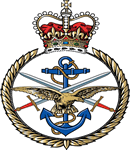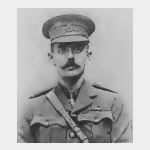Commemorated: | |||
| 1. Memorial: | The (1940) Scroll - WW1 Roll of Honour | 7A GQS | |
Awards & Titles: | |||
Family :
Eldest son of the late John Brooks Close-Brooks, of Birtles Hall, Chelford, Cheshire.His brother, Arthur, went to Winchester and joined the Manchesters, and was linked in 1917.
Service Life:
Campaigns:
- The First World War 1914-1918, World-wide.
| Unit / Ship / Est.: 1st Life Guards |
1st Life Guards Up to August 1914, the Life Guards were stationed at barracks in Hyde Park, handily placed for the many royal guard and ceremonial duties that they were called upon to perform in London. However, despite the finery, this prestigious regiment ? formed in 1788 as the principal mounted guard of the monarch ? the Life Guards were always an active service unit whenever required. It was, of course, a regiment of the regular army. Soon after the declaration of war, one of the squadrons was detached to help form the Household Cavalry Composite Regiment, which moved to France with 4th Cavalry Brigade and saw action at Mons and in the subsequent withdrawal to and beyond the Marne, the decisive battle of the Marne, and later at Ypres. The Composite Regiment was broken up on 11 November 1914, and the squadron rejoined the regiment, which was by now itself on the Western Front. The main body crossed to Belgium, landing on 8 October 1914. Other than in the first two weeks when it was used in the traditional cavalry, for mobile reconnaissance, it fought most of the war as a dismounted force. The regiment was heavily involved at the First Battle of Ypres (October ? November 1914); Second Ypres (April-May 1915); Loos (September-October 1915) and Arras (April 1917). At other times, it took its turn in holding various sections of the front line trenches, and at other times prepared to exploit breakthroughs in battle, but opportunities rarely presented themselves. On 10 March 1918, it was detached from 7th Cavalry Brigade, with which it had served from August 1914. It was formally dismounted, and converted into the No 1 (1st Life Guards) Battalion of the Guards Machine Gun Regiment. It was while this unit was being trained at the great base camp at Etaples that it was hit by an enemy air raid ? a very frequent occurrence in the densely populated coastal area behind the front ? on 19 May 1918. The raid lasted from 10.30pm to 1am on 20 May. Shortly before midnight, two bombs fell on the Life Guards camp. No fewer than 42 men were killed, and 83 wounded, in this incident. |
| Action : The Battles of Ypres 1914 (First Ypres) |
19 October - 22 November 1914. Following the failure of the German Schlieffen Plan in August and September 1914, both sides engaged in a series of linked battles as they sought to outflank each other. The climax of these manouvres was at Ypres in November 1914 when the might of the German Army attempted to break the much outnumbered British Expeditionary Force. The political importance of Ypres, being the last town of any size in Belgium that remained in allied hands, established its importance for both sides and ensured a series of battles over four years.
The First Battle of Ypres in 1914 is characterised by a series of linked heroic stands by outnumbered British soldiers in conditions of confusion and weary endurance. The Germans never knew how close they had come to winning - at one point just the clerks and cooks were the last line of defence for the BEF. By the end of the battle the magnificent original BEF, composed of professional regular soldiers, had been all but destroyed and already the Territorial battalions were called into battle. From the end of 1914 a 'Regular' battalion was in terms of its compostion little different to a Teritorial or later Service Battalion. The professional soldiers had all but vanished.
Detail :
CLOSE-BROOKES, John C, Lieutenant, 1st Life Guards John was the eldest son of the late John Brooks Close-Brooks, of Birtles Hall, Chelford, Cheshire. He was educated at Harrow and Trinity College, Cambridge. He was a J. P. for Cheshire, County Councillor, and Chairman of the Conservative Party in Macclesfield. He was a partner in the firm of Stockbrokers, Marsden, Close-Brooks and Robertson. He married, in 1904, Marie, daughter of Major-General Beresford Lovett, C.B., C.S.I., and had two sons and one daughter. Lieutenant Close-Brooks enlisted in the Cheshire Yeomanry in January 1900, during the South African War (two medals and five clasps). After a year's service he was given a Commission in the 5th Dragoon Guards, and went with them to India. He resigned his Commission in 1904. On the outbreak of the War he joined the 1st Life Guards, and went to the Front in October, 1914. He was killed in action at Zandvoorde, near Ypres, on October 30th, 1914. The following are extracts of letters from brother-officers: "When we were in action he proved himself to be entirely careless of danger, and absolutely fearless, and I know that on that day at Zandvoorde he and his Squadron will have behaved like true British soldiers. "I had the greatest admiration for him; the Squadron to which he belonged was the best that ever went to France, and there were no more gallant members of it than and your husband. . . . These heroes will ever stand out in my memory as among the best types of English gentlemen I have met. "Every officer and man in the Regiment loved your husband, for two reasons; he was a 'man', and he was always so fair to them, and took his turn. "All who knew Close-Brooks knew him to be the most gallant and cool man in action ever seen, and all were devoted to him". The 30th October 1914 saw the deaths in action at Ypres of three Brethren who served in the Life Guards. Lieutenant John CLOSE-BROOKS and Captain Lord William Hugh GROSVENOR of the 1st Life Guards; Captain Alexander VANDELEUR of 2nd Life Guards. In addition Lieutenant Lord C S WORSLEY of the Royal Horse Guards Machine Gun Section also fell. Grosvenor and Vandeleur were members of the HOUSEHOLD BRIGADE LODGE No 2614 and died together fighting against hopeless odds in a moment that no doubt led them to contemplate their inevitable destiny.
Masonic :
| Type | Lodge Name and No. | Province/District : |
|---|---|---|
| Mother : | Combermere Lodge of Union No. 295 E.C. | Cheshire |
Initiated | Passed | Raised |
2nd February 1911 | 2nd March 1911 | 6th April 1911 |
Source :
The project globally acknowledges the following as sources of information for research across the whole database:
- The Commonwealth War Graves Commission
- The (UK) National Archives
- Ancestry.co.uk - Genealogy, Family Trees & Family History online
- ugle.org.uk - The records of the United Grand Lodge of England including the Library and Museum of Freemasonry
Additional Source:
- Founder Researchers : Paul Masters & Mike McCarthy
- Researcher : Bruce Littley

